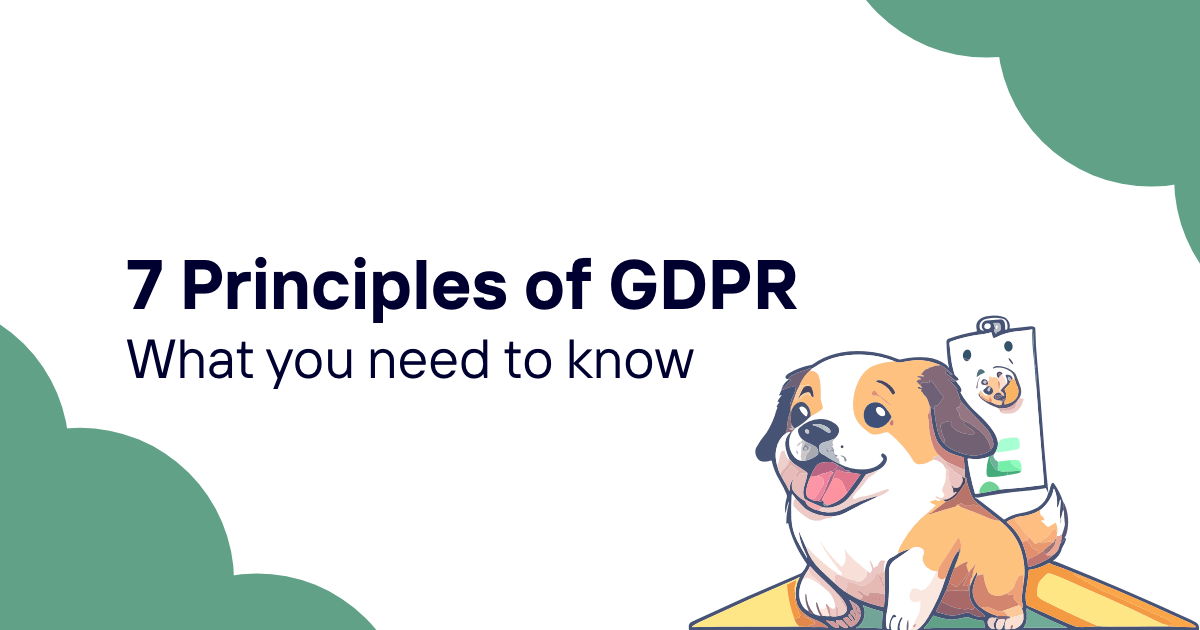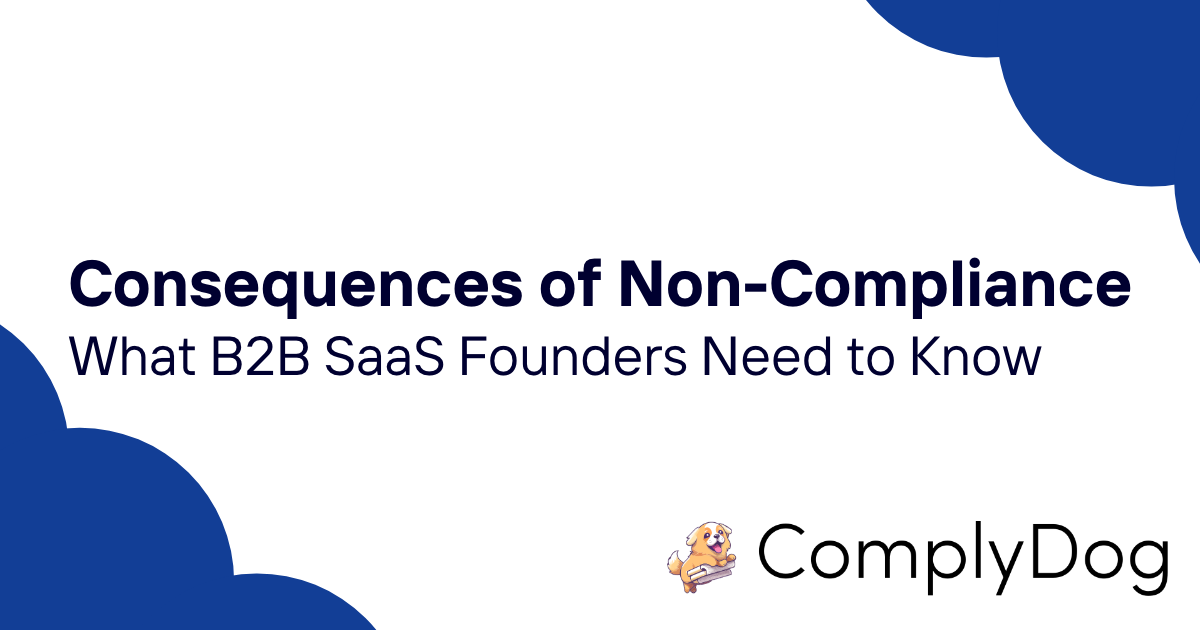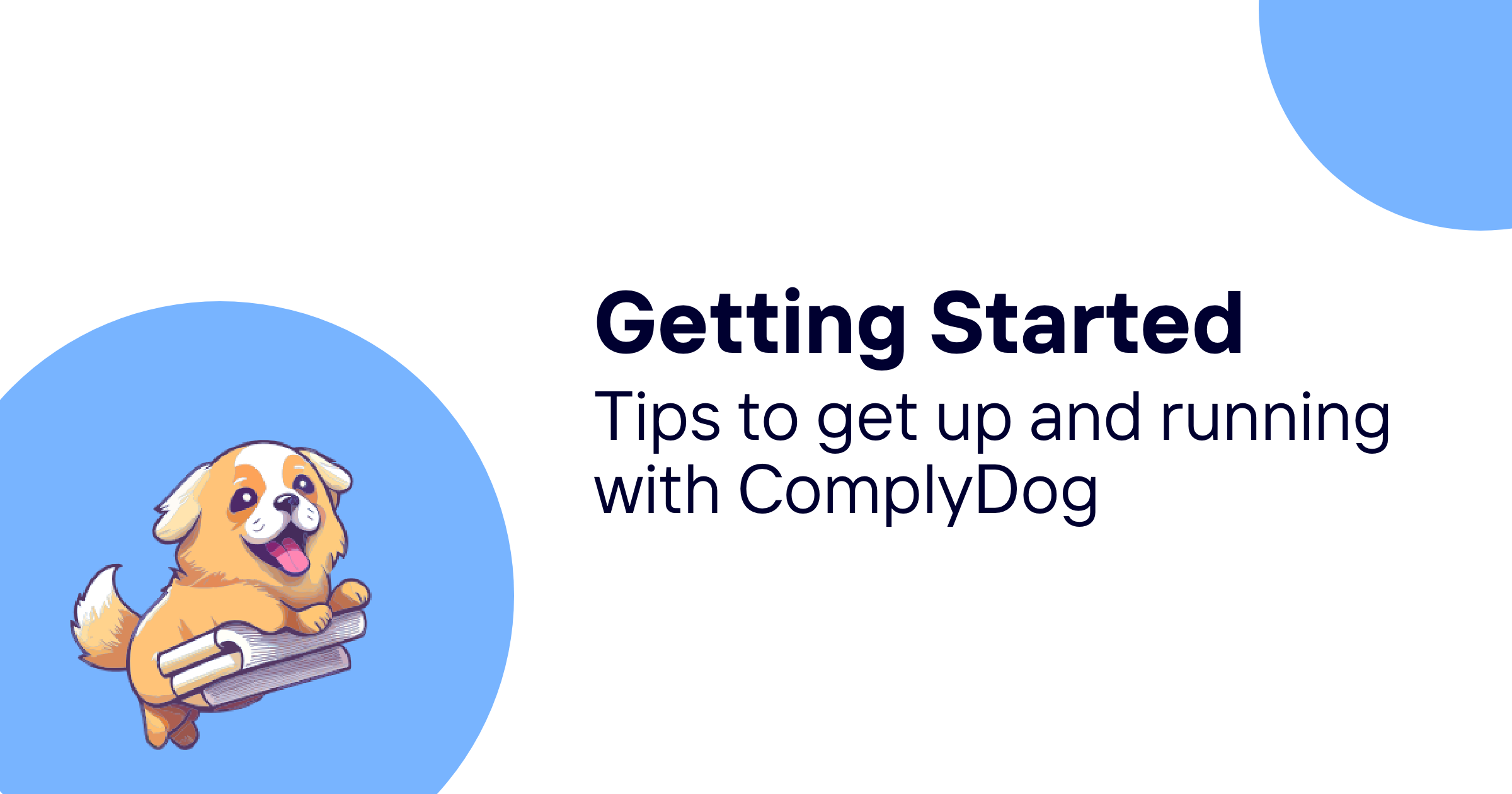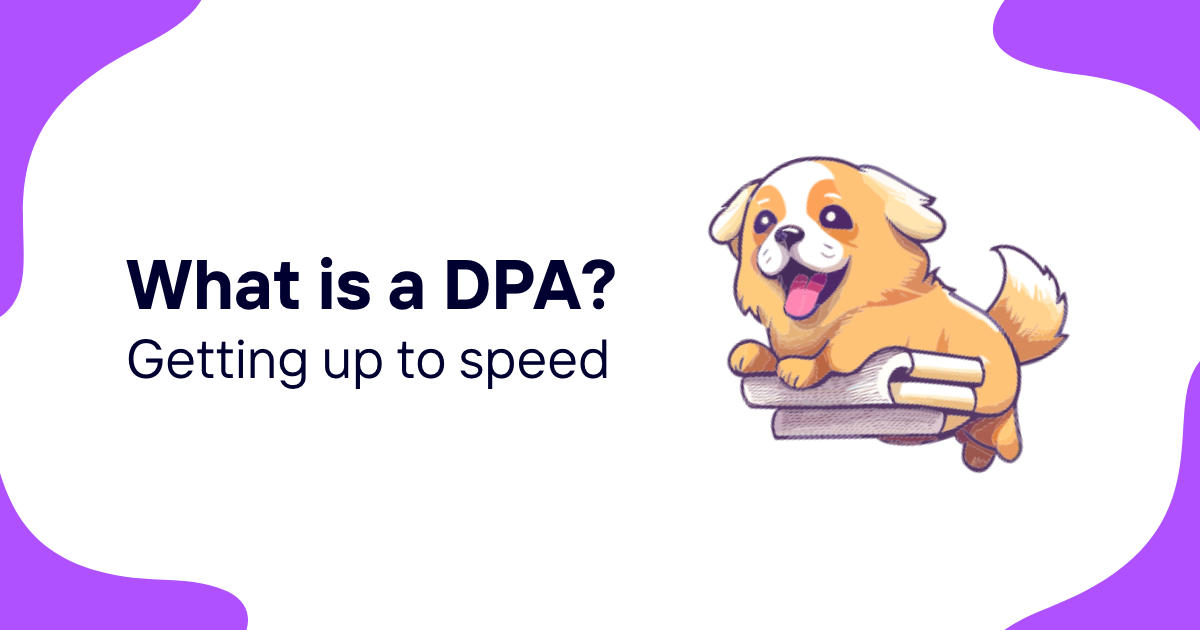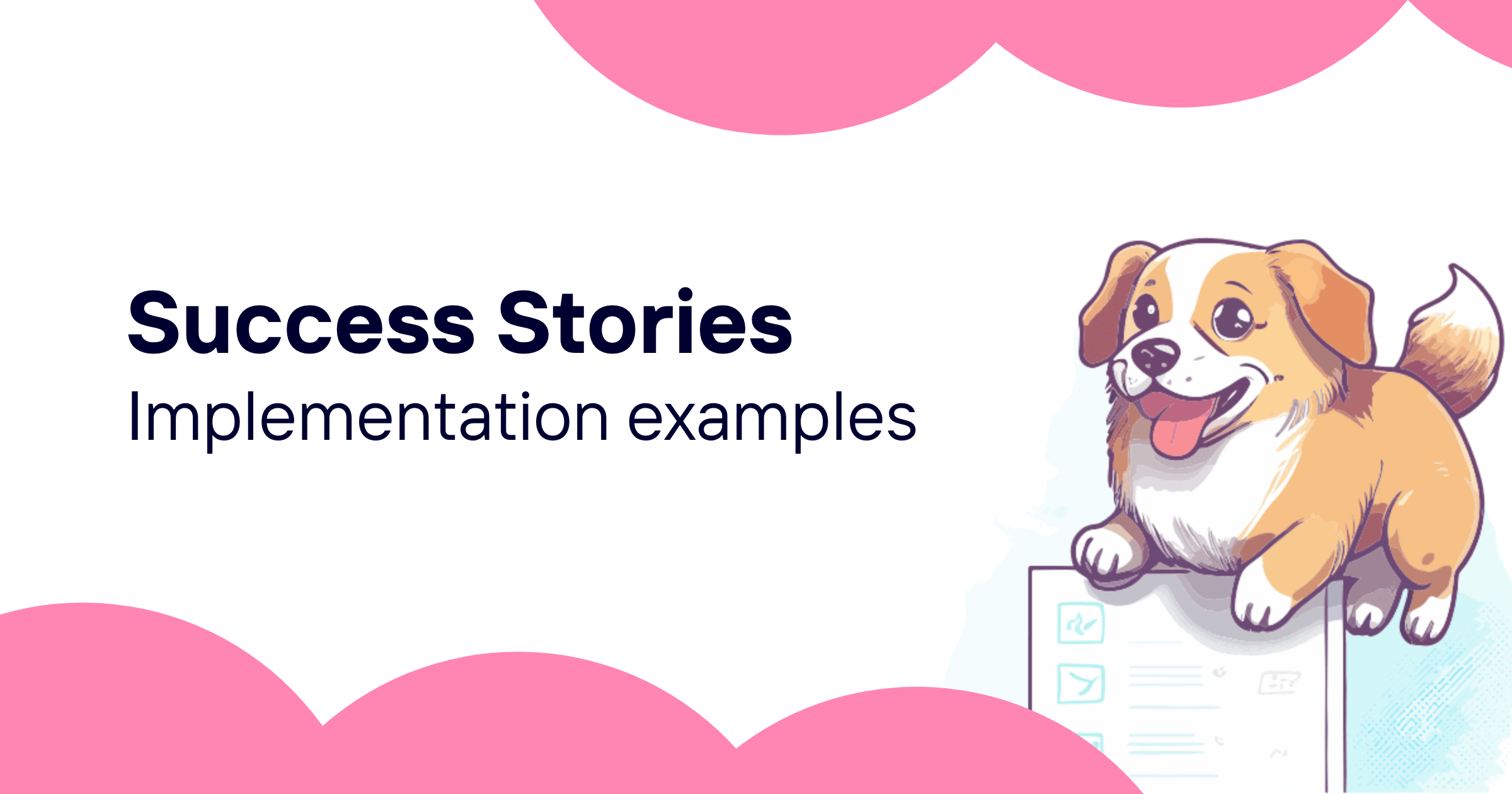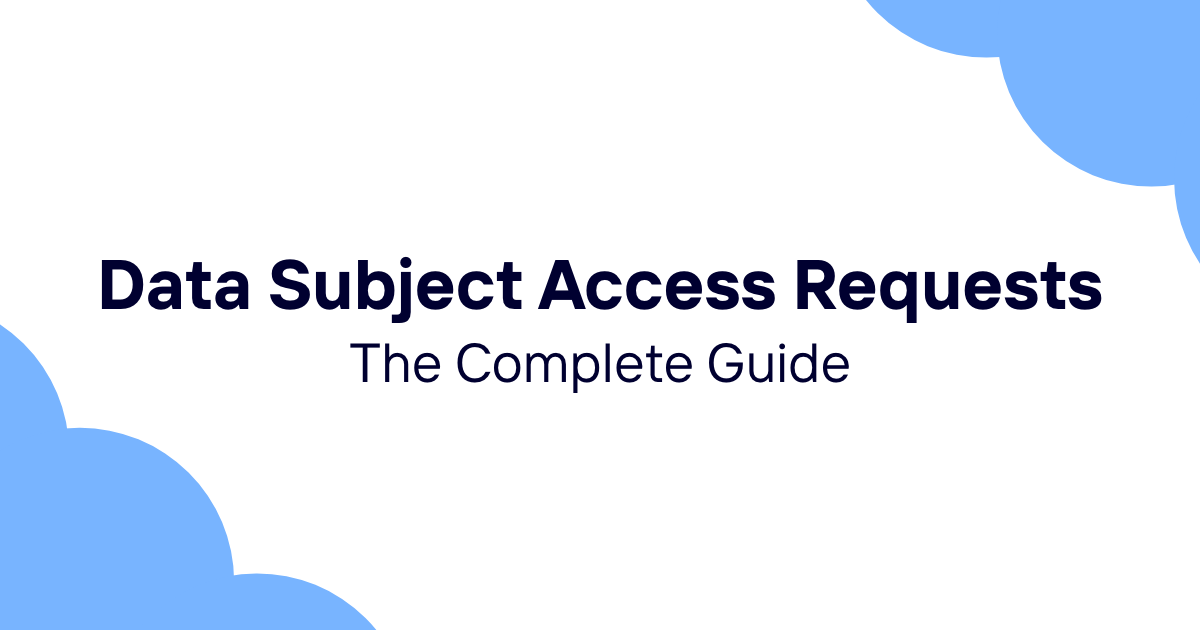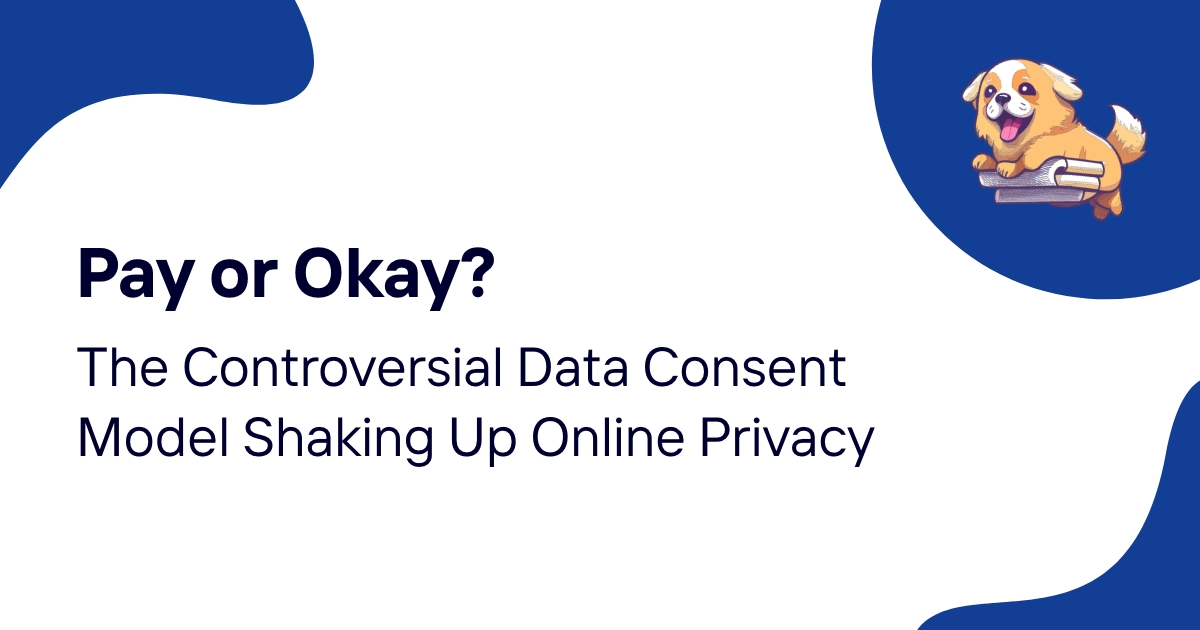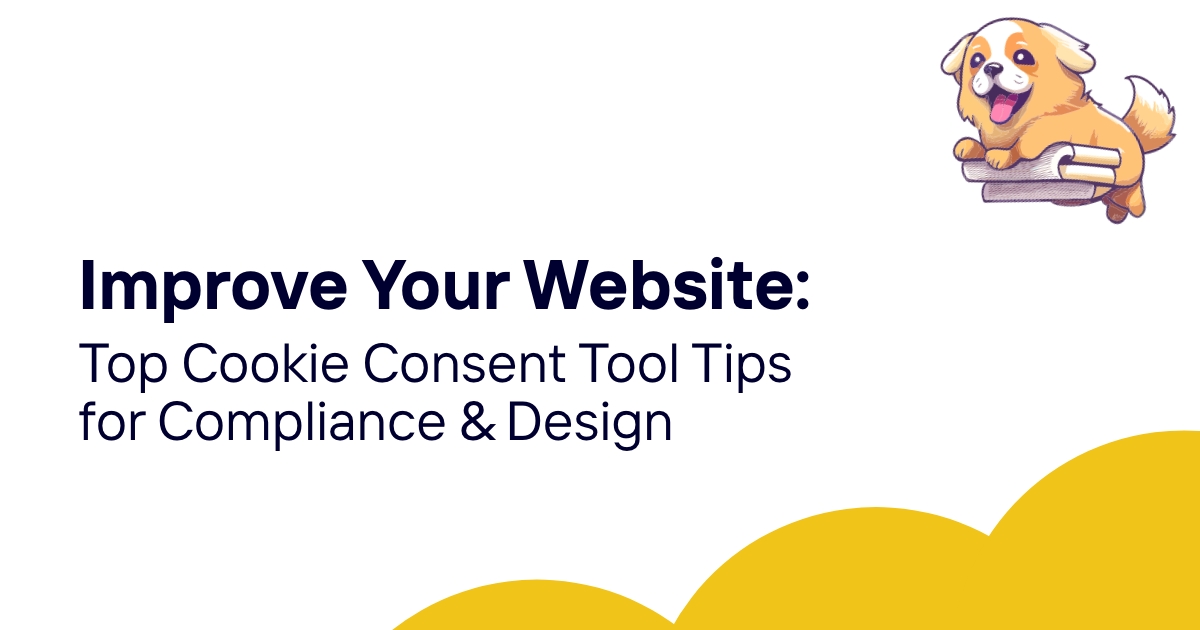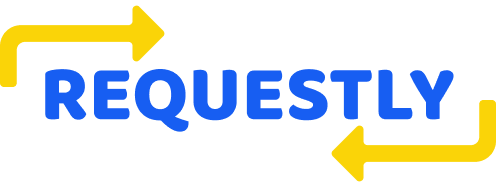In the world of data privacy, the terms "opt-in" and "opt-out" represent two fundamentally different approaches to consent. These small phrases carry enormous weight when it comes to how businesses collect, process, and manage personal data. The distinction might seem minor, but the implications for privacy compliance, user experience, and data collection can be significant.
I've spent years navigating these waters, and I can tell you - choosing the right consent model isn't just about legal compliance. It's about respect for user autonomy, building trust, and creating a sustainable approach to data management.
Let's dive into the differences between opt-in and opt-out approaches, explore their legal contexts, and examine how they affect both businesses and individuals in practice.
Table of contents
- What is opt-in?
- What is opt-out?
- Key differences between opt-in and opt-out
- Legal frameworks and requirements
- Consent rates and user behavior
- Consent bias: the representativeness problem
- Implementation methods and best practices
- Choosing the right approach for your business
- Special considerations for vulnerable groups
- The future of consent models
- How compliance software simplifies consent management
What is opt-in?
Opt-in is a consent model where individuals must take an active, affirmative action to indicate they agree to the collection or processing of their personal data. Nothing happens until the user says "yes."
Put simply, opt-in means the power rests with the individual. If a person doesn't actively give permission, their data remains off-limits to the business or organization.
The opt-in approach operates on the principle that silence does not equal consent. A user must deliberately choose to participate by checking a box, clicking a button, or otherwise indicating their agreement.
Common examples of opt-in scenarios include:
- Cookie consent banners requiring explicit permission before tracking user behavior
- Newsletter signup forms where users must actively check a box to receive marketing emails
- Research studies requiring participants to affirmatively agree to participate
- Mobile apps requesting permission to access device features like location or camera
The key characteristic of true opt-in is that it's an affirmative action - the default state is "no permission granted." This puts control firmly in the hands of the individual.
One interesting example I've encountered was a company that implemented a tiered opt-in approach, allowing users to consent to different levels of data processing separately. Users could opt-in to basic analytics but decline marketing communications, creating a more nuanced consent experience.
What is opt-out?
The opt-out approach takes an entirely different philosophical stance. Under this model, consent is presumed until explicitly withdrawn.
With opt-out, data collection or processing begins automatically, and the burden falls on the individual to take action if they don't want to participate. The default state is "permission granted" until the person says otherwise.
Opt-out mechanisms typically appear as:
- Unsubscribe links at the bottom of marketing emails
- Settings toggles pre-switched to "on" for data sharing
- Pre-checked boxes for receiving communications
- Privacy notices stating that continued use of a service implies consent
- "Do Not Sell My Personal Information" links required by laws like CCPA
The fundamental characteristic of opt-out is that inaction equals consent. If a user does nothing, their data may be collected, processed, or shared according to the stated terms.
I once reviewed a website that buried their opt-out option in the 15th paragraph of their privacy policy. Technically, they provided an opt-out mechanism, but the practical reality was that very few users would ever find it. This highlights a common criticism of opt-out approaches - they can technically comply with requirements while still making it difficult for users to exercise their choices.
Key differences between opt-in and opt-out
The philosophical gap between these two approaches is substantial. Let's break down the most significant differences:
Default state
- Opt-in: Default is "no consent" - action required to participate
- Opt-out: Default is "consent given" - action required to withdraw
User experience
- Opt-in: Front-loads the decision, presenting choices before data collection
- Opt-out: Shifts decision-making to after data collection has begun
Transparency level
- Opt-in: Typically more transparent, as users must be informed before consent
- Opt-out: Can be less transparent, with withdrawal options sometimes less visible
Control distribution
- Opt-in: Places more control with the individual
- Opt-out: Places more control with the organization
Participation rates
- Opt-in: Generally results in lower participation rates (opt-in rates often 20-40%)
- Opt-out: Typically yields higher participation rates (opt-out rates often exceed 95%)
Data quality
- Opt-in: May produce higher-quality data from more engaged participants
- Opt-out: May include less engaged participants, potentially diluting data quality
Legal compliance
- Opt-in: Required by stricter privacy regulations like GDPR
- Opt-out: Permitted in some contexts by regulations like CCPA/CPRA
Administrative burden
- Opt-in: Often creates more front-end work for organizations
- Opt-out: May require more robust record-keeping of opt-out requests
This contrast creates a fundamental tension between maximizing participation rates (favored by opt-out) and maximizing individual control (favored by opt-in). The right approach ultimately depends on your specific context, regulatory environment, and ethical considerations.
I remember testing both approaches for a newsletter signup form. The opt-in version (unchecked box) had a 32% subscription rate, while the opt-out version (pre-checked box) yielded a 91% subscription rate. But there was a catch - the opt-out group had significantly higher unsubscribe rates and lower engagement. This underscores how the initial consent mechanism affects the entire relationship.
Legal frameworks and requirements
The legal landscape around consent models varies significantly by region. Different regulatory frameworks take distinct approaches to opt-in and opt-out requirements:
GDPR (European Union)
The General Data Protection Regulation establishes one of the strictest consent standards globally. Under GDPR:
- Explicit opt-in consent is required for most data processing
- Consent must be freely given, specific, informed, and unambiguous
- Pre-checked boxes or implied consent don't meet the standard
- Users must be able to withdraw consent easily at any time
- Organizations must document consent and honor withdrawal requests
The GDPR approach centers on putting individuals in control of their data through affirmative consent. There are limited exceptions where processing can occur without explicit consent, such as when necessary for contract performance or legitimate interests, but these exceptions are interpreted narrowly.
CCPA/CPRA (California)
California's privacy laws take a different approach:
- Uses an opt-out model for most data collection
- Requires a visible "Do Not Sell My Personal Information" link
- Mandates clear methods for opting out of data sales
- Requires opt-in consent only for minors under 16
- Allows continued processing for business purposes even after opt-out
This creates a system where data collection is generally permitted by default, but consumers have robust opt-out rights.
LGPD (Brazil)
Brazil's General Data Protection Law takes a hybrid approach:
- Requires opt-in consent for processing sensitive data
- Mandates opt-in for specific processing activities
- Allows opt-out for non-sensitive data and certain processing activities
- Requires consent to be free, informed, and unambiguous
- Gives users the right to revoke consent at any time
Other jurisdictions
Many other jurisdictions have implemented or are developing their own approaches:
- Canada's PIPEDA generally requires opt-in consent for most personal information
- Australia's Privacy Act allows for implied consent in some circumstances
- Thailand's PDPA closely follows GDPR's opt-in model
- The UK's post-Brexit approach maintains GDPR-like opt-in requirements
This complex global landscape creates challenges for organizations operating across multiple jurisdictions. The safest approach is often to implement the strictest standard (typically GDPR's opt-in model) across all operations, though this may reduce participation rates.
But I'll tell you what I've seen work well - geography-based consent models. Some sophisticated organizations implement different consent mechanisms based on the user's location, using opt-in for EU visitors and opt-out for US visitors. This maximizes participation while maintaining legal compliance, though it creates additional technical complexity.
Consent rates and user behavior
Research consistently shows significant differences in participation rates between opt-in and opt-out approaches. These differences have major implications for data collection, scientific research, and business operations.
A systematic review published in the Journal of Medical Internet Research examined consent procedures for reusing health data. The findings were stark:
- Opt-in procedures had an average consent rate of 84%
- Opt-out procedures achieved consent rates of 96.8%
- When both approaches were compared directly in the same population, opt-in yielded 21% participation while opt-out achieved 95.6%
These dramatic differences reflect fundamental aspects of human psychology and behavior:
- Default bias: People tend to stick with the default option
- Status quo bias: Inertia leads people to maintain the current state
- Effort aversion: Additional steps (clicking, checking boxes) reduce completion
- Decision avoidance: Complex choices can lead to decision paralysis
The impact of these differences extends beyond simple participation numbers. Several important factors are affected:
Response to reminders
Studies show reminders can significantly improve opt-in response rates. In research contexts, sending reminder messages increased consent rates from approximately 53% to 75.5%. However, even with reminders, opt-in rates typically remain below opt-out levels.
Method of obtaining consent
How consent is requested also matters considerably:
- Verbal opt-in requests (85.5% consent) outperform written ones (56.5%)
- In-person requests generally achieve higher consent rates than remote ones
- Digital consent forms with clear, simple designs outperform complex ones
- Form length dramatically impacts completion rates
Broad vs. specific consent
The scope of consent requested affects participation:
- Broad consent (for multiple future uses) typically achieves higher rates (90.1%)
- Specific consent (for a single purpose) generally achieves lower rates (79.2%)
- The gap between broad and specific consent is more pronounced in opt-in scenarios
I recall a membership organization that switched from an opt-out to an opt-in model for their annual directory listing. Participation plummeted from 97% to 46%, despite multiple reminders. This dramatically reduced the directory's value, as it no longer represented the full membership. The organization ultimately reverted to opt-out with clearer withdrawal options - a practical compromise between participation and autonomy.
Consent bias: the representativeness problem
One of the most significant concerns with consent models - particularly opt-in approaches - is the potential for consent bias. This occurs when those who consent differ systematically from those who don't, creating a non-representative sample.
Research has identified several consistent patterns in who tends to provide or withhold consent:
Demographic factors
Multiple studies have found that consent rates vary by:
- Age: In opt-in studies, consenters tend to be younger, while in opt-out studies, nonconsenters tend to be older
- Gender: Some opt-in studies show males more likely to consent
- Education: Higher education levels correlate with higher opt-in consent rates
- Income: Higher income brackets show higher opt-in rates
- Socioeconomic status: Lower SES groups are less likely to opt in
Health and treatment factors
Health status also influences consent patterns:
- Studies show those with poorer health status are less likely to opt in
- People with more complex treatment histories often have lower opt-in rates
- Those declining treatments are less likely to consent to data use
Ethnicity and cultural factors
Some research indicates:
- Minority groups may have lower opt-in rates in some contexts
- Cultural factors can influence willingness to share certain types of data
- Historical experiences with research may affect trust and consent decisions
These patterns create a serious methodological problem: if consent procedures systematically exclude certain populations, the resulting data may be biased and unrepresentative. This can undermine research validity, skew analytics, and lead to inappropriate conclusions.
The implications are particularly serious for:
- Medical research: Underrepresentation of certain populations can affect treatment development
- Public policy: Biased data can lead to misaligned policies
- Algorithmic systems: Training data bias can perpetuate and amplify inequities
- Business decisions: Skewed customer data leads to flawed strategic choices
This representativeness challenge creates a tension between individual autonomy (maximized by strict opt-in) and collective benefits from representative data. There's no perfect solution, but transparency about these limitations is essential.
I've observed this firsthand in a patient survey system that used strict opt-in consent. Despite a decent overall response rate, participants skewed heavily toward tech-savvy, educated, younger patients. This created a significant blind spot around the experiences of older and less tech-comfortable patients - precisely the groups that might have different healthcare needs and experiences.
Implementation methods and best practices
Implementing effective consent mechanisms requires careful design choices. Here are best practices for both opt-in and opt-out approaches:
For opt-in implementation
When implementing opt-in consent:
-
Use clear, affirmative actions
- Unchecked boxes that users must actively select
- Require explicit confirmation (e.g., "I agree" buttons)
- Avoid ambiguous actions like "continuing to browse"
-
Provide granular options
- Separate consent for different processing purposes
- Allow partial consent where appropriate
- Make no options pre-selected
-
Design for clarity
- Use plain, non-technical language
- Explain what data will be collected and why
- Make consent requests visible and unmissable
-
Document properly
- Record when, how, and what consent was given
- Maintain time-stamped consent records
- Establish processes for handling consent withdrawal
For opt-out implementation
When implementing opt-out mechanisms:
-
Make opt-out options visible
- Clear, prominently placed links or buttons
- Standardized language (e.g., "Do Not Sell My Information")
- Multiple access points to opt-out mechanisms
-
Simplify the opt-out process
- Minimize steps required to opt out
- Avoid verification hurdles when possible
- Don't require account creation to opt out
-
Confirm opt-out actions
- Provide clear confirmation when opt-out is processed
- Explain what changes as a result of opting out
- Set clear expectations about timing of opt-out effects
-
Honor preferences consistently
- Establish systems to track opt-out preferences
- Ensure preferences persist across sessions
- Extend opt-out to third parties where relevant
For both approaches
Regardless of consent model:
-
Test with real users
- Conduct usability testing of consent mechanisms
- Measure completion rates and abandonment points
- Gather qualitative feedback on clarity and ease of use
-
Optimize for mobile experiences
- Ensure consent interfaces work well on small screens
- Test on various devices and browsers
- Avoid mechanisms that are difficult to use on touchscreens
-
Review and update regularly
- Audit consent mechanisms periodically
- Update language as processing practices change
- Stay current with regulatory developments
-
Measure and improve
- Track consent/opt-out rates over time
- A/B test different implementations
- Balance legal compliance with user experience
One financial services firm I worked with found that implementing a layered consent approach dramatically improved both opt-in rates and data quality. Their initial consent form was overwhelming, with 12 separate checkboxes on one screen. By redesigning to a progressive disclosure model - starting with the most essential consents and introducing additional options later - they increased overall consent rates while giving users more control.
Choosing the right approach for your business
Selecting between opt-in and opt-out approaches involves balancing several factors:
Regulatory requirements
Your first consideration must be legal compliance:
- If you operate in GDPR jurisdictions, opt-in will generally be required
- For primarily US operations, opt-out may be sufficient in many contexts
- For global operations, you may need different approaches by region
- Consider sector-specific regulations (healthcare, finance, etc.)
Data needs and purposes
Different data uses may justify different approaches:
- Essential service functionality might justify opt-out (or no consent)
- Marketing and promotional activities typically warrant opt-in
- Analytics might use different approaches depending on identifiability
- Secondary uses of data generally require more explicit consent
Risk assessment
Consider the potential consequences of your choice:
- Sensitive data warrants stricter opt-in approaches
- Higher-risk processing activities should lean toward explicit consent
- Consider reputational risks of different approaches
- Assess the impact of potential data breaches on users
User expectations
Different contexts create different expectations:
- Where privacy expectations are high, opt-in is more appropriate
- Established industry practices influence expectations
- Consider the level of surprise users might experience
- Transparency can mitigate concerns with either approach
Business impact
Be pragmatic about business implications:
- Opt-in will reduce participation rates but may increase quality
- Opt-out maximizes participation but may create later friction
- Consider the value of data representativeness for your purposes
- Weigh short-term collection against long-term relationship building
Rather than viewing this as a binary choice, consider a nuanced approach:
| Processing purpose | Recommended consent approach | Rationale |
|---|---|---|
| Essential functionality | No consent needed (contractual basis) | Required to deliver service |
| Basic analytics | Opt-out with clear notice | Low risk, benefits service improvement |
| Marketing communications | Explicit opt-in | High privacy expectation, regulatory requirement |
| Sensitive data processing | Granular opt-in | Highest risk category, legal requirement |
| Third-party sharing | Explicit opt-in | High privacy impact, reputational risk |
I've seen companies struggle when they treat consent as one-size-fits-all. A retail client once implemented a strict opt-in model for everything - including basic store functionality like shopping carts. Their conversion rates plummeted. When they revised their approach to focus opt-in on marketing and analytics while using other legal bases for essential functions, they found a more sustainable balance.
Special considerations for vulnerable groups
When implementing consent mechanisms, special attention must be paid to vulnerable populations, including children, elderly individuals, and those with cognitive impairments. These groups present unique challenges for both opt-in and opt-out approaches.
Children and minors
For individuals under the legal age of consent:
- Many jurisdictions require parental/guardian consent for data collection
- GDPR sets 16 as the default age of consent (though member states can lower to 13)
- COPPA in the US requires verifiable parental consent for children under 13
- The CCPA/CPRA requires opt-in consent for selling data of minors under 16
Research shows that parental consent rates are typically lower than direct consent rates. Studies found that when legal representatives provided consent in opt-in procedures, average consent rates were around 82%, compared to 85% when individuals themselves consented.
Implementation challenges include:
- Verifying the identity of parents/guardians
- Balancing protection with appropriate autonomy for older minors
- Designing age-appropriate explanations of data practices
- Managing consent as minors reach the age of majority
Elderly and cognitively impaired individuals
For elderly individuals or those with cognitive limitations:
- Legal frameworks often allow for representative decision-making
- Consent mechanisms should be accessible and understandable
- Representatives may be more cautious when providing consent on behalf of others
- Blanket exclusion risks creating systemic data gaps about these populations
Studies indicate that in healthcare research using opt-in approaches with legal representatives, consent rates can be significantly lower than in the general population.
Best practices include:
- Providing clear, simple explanations with minimal jargon
- Using multiple formats (text, audio, visual) to explain consent
- Allowing sufficient time for decision-making
- Creating safeguards while avoiding unnecessary paternalism
Ethical considerations
Beyond legal requirements, ethical principles suggest:
- Extra caution with vulnerable populations is warranted
- The potential benefits of inclusion must be weighed against risks
- Default exclusion may perpetuate underrepresentation in research and services
- Consultation with advocacy groups can improve approach
These considerations highlight the tension between protection and inclusion. Overly restrictive approaches may "protect" vulnerable groups by excluding them entirely, while insufficient protections may enable exploitation.
One health researcher told me about their work developing consent materials for a dementia study. They found that traditional opt-in forms overwhelmed both patients and caregivers, resulting in near-zero participation. By redesigning their approach with simple language, visual aids, and a tiered consent process, they achieved more meaningful consent and better representation.
The future of consent models
As technology evolves and privacy awareness grows, consent models are also evolving. Several emerging approaches aim to address the limitations of traditional opt-in and opt-out mechanisms:
Dynamic consent
Dynamic consent moves beyond one-time decisions to an ongoing relationship:
- Individuals can modify their preferences over time
- Different permissions for different contexts
- Technology enables more granular control
- Preferences update as circumstances change
This approach acknowledges that privacy preferences aren't static and allows individuals to revisit decisions as their comfort level or the context changes.
Contextual consent
Contextual approaches focus on collecting consent at the relevant moment:
- Permission requested at the point of use rather than upfront
- Just-in-time notices provide relevant context
- Users can make decisions with better understanding
- Reduces consent fatigue from upfront decisions
By tying consent requests to specific actions, contextual models aim to make the impact of consent choices more concrete and understandable.
Broad consent with guardrails
Some sectors are exploring broad consent models with robust governance:
- Initial broad consent for categories of future use
- Oversight committees review specific applications
- Transparency about actual uses
- Ability to withdraw from future uses
This approach attempts to balance the practicality of broad consent with accountability mechanisms that protect against mission creep.
Privacy by design
Rather than focusing solely on consent, privacy by design emphasizes:
- Minimizing data collection from the start
- Building privacy protections into systems
- Reducing the need for consent through data minimization
- Using anonymization and pseudonymization where possible
This approach recognizes that the best privacy protection often comes from collecting less data in the first place.
Automated privacy assistants
Emerging technologies aim to help users manage consent decisions:
- AI tools that learn user privacy preferences
- Automated agents that negotiate privacy terms
- Browser extensions that manage consent across sites
- Standardized machine-readable privacy policies
These technologies could reduce the cognitive burden of consent decisions while potentially achieving more personalized privacy outcomes.
The future likely involves combining these approaches rather than a one-size-fits-all solution. The most promising path forward may be layered approaches that provide simple defaults for most users while enabling deeper control for those who want it.
I recently spoke with a privacy engineer working on "consent agents" - browser-based tools that learn your privacy preferences and automatically respond to consent requests based on your past choices and risk tolerance. While still experimental, these tools could dramatically reduce consent fatigue while potentially making more informed decisions than rushed human clicking.
How compliance software simplifies consent management
Managing consent effectively across different jurisdictions and use cases presents significant operational challenges. This is where compliance software becomes invaluable.
Modern GDPR compliance tools like ComplyDog help organizations implement appropriate consent mechanisms while maintaining proper records and honoring user preferences. These platforms offer several key advantages:
Streamlined consent collection
Compliance software helps by:
- Providing customizable consent templates that meet legal requirements
- Enabling granular consent options for different processing activities
- Supporting multiple languages for global operations
- A/B testing different consent implementations for optimization
Comprehensive record-keeping
GDPR and similar regulations require not just obtaining consent, but documenting it. Compliance tools:
- Maintain time-stamped records of all consent actions
- Document the exact language and options presented
- Securely store consent receipts
- Generate audit trails for verification purposes
Preference management
Effective consent isn't a one-time event but an ongoing relationship:
- Centralized dashboards for viewing all user consent statuses
- Self-service preference centers for users to update choices
- Automated processing of withdrawal requests
- Synchronization of preferences across systems
Regulatory updates
The privacy landscape continues to evolve, and compliance software helps you stay current:
- Regular updates to adapt to regulatory changes
- Jurisdiction-specific implementations
- Guidance on implementing best practices
- Reduced risk of non-compliance penalties
Integration capabilities
Consent doesn't exist in isolation - it must connect to your actual data practices:
- API connections to marketing platforms
- Integration with analytics tools
- Connections to CRM systems
- Hooks into data warehouses and processing systems
By implementing a solution like ComplyDog, organizations can achieve more effective consent management while reducing the administrative burden on their teams. This allows businesses to focus on using data responsibly rather than getting lost in the complexity of compliance requirements.
The choice between opt-in and opt-out approaches remains context-dependent, but the right compliance software can help you implement either model effectively while maintaining the documentation needed for compliance.
One medium-sized ecommerce business I advised was struggling with managing consent across their website, email marketing, and customer service systems. After implementing a comprehensive compliance solution, they not only achieved better regulatory compliance but also gained valuable insights into customer preferences that improved their marketing effectiveness. The structured approach to consent actually enhanced their customer relationships rather than hindering them.
In the end, effective consent management isn't just about legal compliance - it's about building trust through transparency and respect for user choices. The right tools make this possible at scale.

